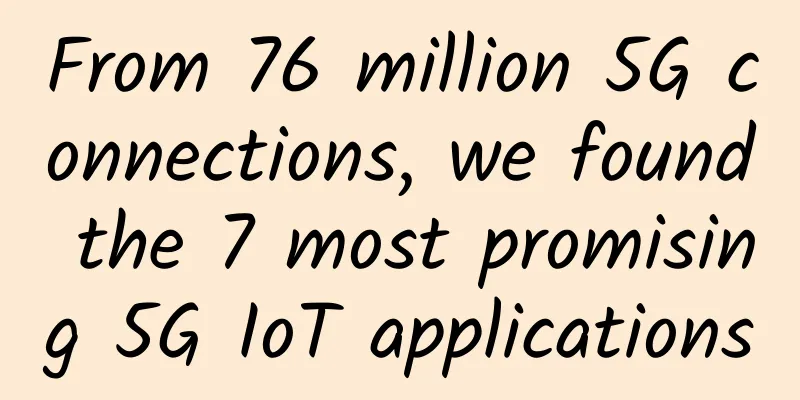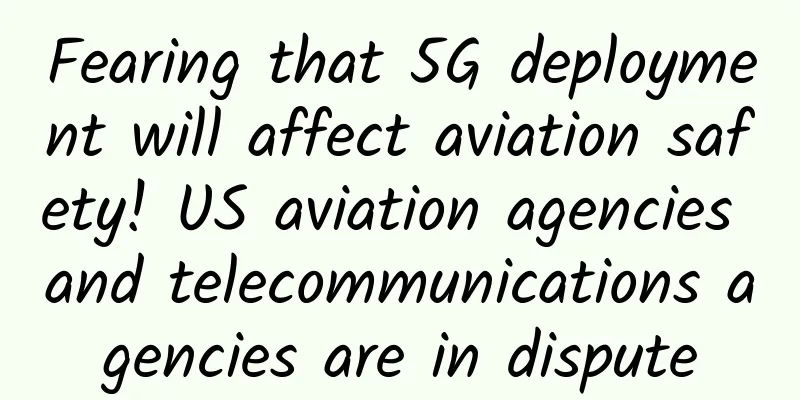From 76 million 5G connections, we found the 7 most promising 5G IoT applications

|
5G is the fifth generation of mobile communication technology and the first generation of mobile communication technology designed specifically for various vertical IoT use cases. These new use cases place higher demands on communication technology, including gigabit data transmission rates, millisecond-level latency, ultra-high network reliability, and massive connection density. Figure 1: 44 5G IoT use cases and their maturity levels and market potential Recently, IoT Analytics, an IoT market research organization, surveyed 44 different 5G IoT use cases and estimated that by 2025, these use cases will cover 76 million 5G nodes. This article highlights seven of the most promising 5G IoT use cases, as follows: 5G IoT use case #1: Vehicle telematics Figure 2: Example of an OEM vehicle telematics architecture (Image source: FIPA) The automotive and transportation industry (A&T) is expected to become the first industry in 5G IoT applications. As one of the most mature application areas of IoT, millions of smart connected cars are already using vehicle telematics such as vehicle diagnostics, location tracking, and UBI insurance (insurance based on user usage pricing). These applications mainly rely on collecting small-volume and non-real-time data from vehicles. Currently, data transmission is mostly based on traditional cellular (2G/3G/4G) networks, and the performance of these technologies meets their current communication needs. The advent of 5G offers more possibilities. Related companies can collect more granular data about vehicle health, performance, and driver behavior in real time, and provide more complex services (such as services for automotive OEMs and car dealers) and new pricing plans (such as services for insurance companies). While LTE will likely continue to be the primary connectivity technology for these applications, in the near future (especially as 2G and 3G networks are being shut down in many parts of the world over the next few years), IoT Analytics expects that many automotive telematics technologies will support both 4G and 5G connectivity. While operators continue to advance network deployments, enterprises can take advantage of 5G’s enhanced capabilities to future-proof their solutions. Example: Samsung released the "industry's first 5G automotive solution" at CES 2018, also known as the TCU remote control system. TCU is a technology jointly developed by Samsung and Harman, which Samsung acquired Harman International at the end of 2016. The new TCU operates on the principle that in the next 10 years, cars will no longer be independent individuals, but part of a larger and more extensive transportation system. Supported by C-V2X technology that supports cellular network connections, Samsung and Harman's 5G solution allows cars to communicate directly with traffic lights, external traffic management systems and other vehicles. In other words, TCU can serve as a connection point between individual cars and large traffic networks. Samsung said that the new generation of TCU is compatible with existing 4G CAT16 networks, and the platform can be directly upgraded to higher bandwidth 5G networks in the future. 5G IoT use case #2: In-car infotainment Figure 3: Nissan conducted a field test of its 5G and AR-based connected car technology In-car infotainment is another relatively mature application area that is also expected to benefit greatly from 5G connectivity. This use case involves providing information and entertainment services to drivers and passengers, such as the latest traffic conditions or weather forecasts, as well as high-definition video and music streaming. Compared to LTE, 5G networks offer the ability to enhance these applications and support new ones, such as in-vehicle retail and marketing, and even AR/VR-based navigation systems and entertainment services. Although in the next few years, 5G in-vehicle infotainment will mainly be achieved through fixed connections (such as using a 5G smartphone to connect to the car), the emergence of 4G/5G dual-mode solutions for intelligent connected cars will pave the way for more complex in-vehicle infotainment applications. Example: In March this year, Nissan Motor Company cooperated with Japanese mobile operator NTT DOCOMO to test Nissan's newly released "Invisible-to-Visible (I2V)" technology in a 5G environment. "Invisible Visualization" technology integrates the virtual and real worlds, and presents drivers with "unseen" scenes by combining internal and external sensors of the vehicle with cloud data, such as observing traffic conditions at the far end of the road, behind surrounding buildings, or at turns. The technology allows drivers and passengers to connect to the virtual reality (Metaverse) and interact with virtual portraits in the virtual world. At that time, family, friends or other characters will appear in the car with three-dimensional, augmented reality virtual technology to provide companionship or assistance to the driver and passengers. 5G IoT use case #3: Smart grid Figure 4: Example of a smart grid and its communication network (Image source: ABB, Deutsche Telekom) In the energy and utilities sector, 5G technology’s enhanced capabilities are particularly well suited for real-time management and automated operations of smart grids. These solutions are designed to optimize operations and maintenance by quickly detecting and responding to grid faults, while meeting increasingly stringent grid requirements—such as the entry of renewable energy into the grid, the integration of distributed energy resources (DER), stricter regulations, and evolving cybersecurity threats. Integrating these DER “microgrids” with the power grid is a rather challenging task, especially due to the high variability of energy production. In order to avoid overloads and ensure system reliability, it is also necessary to send message signals extensively between all microgrid elements, because there will be strict requirements on communication delay and network reliability, which can only be fully met by wired communication technology today. In fact, most utilities currently have installed grid monitoring systems, usually based on wired communication networks over power lines (PLC), optical fiber or copper wires, while wireless communication is limited to less mission-critical applications. However, as utility operators increasingly upgrade and automate grids using new sensors and control systems, and integrate renewable energy and electric vehicle charging stations, 5G is expected to be adopted in large part because it offers greater deployment flexibility and lower costs than wired alternatives while guaranteeing similar performance levels. Example: Nokia, ABB and Kalmar, a Cargotec company, have successfully conducted industrial trials to leverage the low latency capabilities of 5G to support time-critical applications and improve protection and efficiency in smart grids and port automation. In the first trial, Nokia and ABB demonstrated how ultra-reliable low-latency communications can be used for protection applications in medium-voltage distribution networks, especially to clear critical faults immediately to keep the distribution network running, protect personnel and avoid equipment damage. The trial has confirmed that 5G ultra-reliable low-latency communications meets the latency requirements set by the protection application. 5G IoT use case #4: Mobile and collaborative robots
Figure 5: Bosch Rexroth's 5G AGV demonstration at the Hannover Fair in 2019 (Image source: NextRobotics) In the industrial sector, it is widely believed that 5G technology is very suitable for various industrial robots, from static collaborative robots to fully mobile robots such as autonomous guided vehicles (AGVs). These robots have many situational awareness sensors, and as technology continues to advance, they are becoming smarter and able to complete various tasks autonomously, such as moving goods or performing repairs. However, these robots need to process more and more data, and providing them with enough processing power can be very challenging and expensive, especially for smaller robots. 5G can help solve these problems. Due to its low latency and high reliability, 5G will enable some processing to be offloaded to edge or cloud-based servers, thereby minimizing the hardware complexity and cost of robots. Example: Last year, Audi and Ericsson announced a partnership to apply 5G communication technology to Audi's car production, build smart factories, and further increase production capacity. The first phase of the cooperation will start with wireless production robots equipped with automotive gluing technology to test the application of the most critical delay technology in the automotive process; on the other hand, Audi's Gaimersheim Production Technology Laboratory will also cooperate with this plan to start building a simulated factory production line environment, and with Ericsson's 5G technology support, it will also be tested in Audi's global production lines in succession, hoping to ultimately achieve a significant increase in production capacity and open up new business opportunities. 5G IoT use case #5: Video surveillance
Figure 6: 5G video surveillance system installed by Samsung and KDDI at the international terminal of Tokyo's Ota Haneda Airport (Image source: Samsung) Video surveillance and analysis is another application that is expected to flourish under 5G networks. Due to the increasing threats to public safety in recent years, many governments and municipalities around the world have been actively investing in public surveillance and security systems, and this trend is expected to accelerate further in the future. Today, most public video surveillance systems still rely on wired connections, but wireless communication technologies such as Wi-Fi or cellular networks are becoming increasingly popular because they are easier to deploy, faster, and generally less expensive than wired networks. While Wi-Fi is the preferred option in static CCTV systems, cellular connectivity, especially LTE, is more suitable for static video surveillance in temporary installations (e.g., construction sites, concerts, festivals, public events such as election rallies) and mobile video surveillance (e.g., in police cars, public transportation, drones, or cameras worn by law enforcement officers). While LTE networks provide good performance guarantees for remote access to live HD video, 5G applications will provide the performance boost needed for more complex real-time video content analysis and the deployment of large numbers of cameras. Example: Earlier this year, Samsung Electronics and Japanese telecom operator KDDI announced that they had completed a 4K UHD (ultra-high definition) surveillance video transmission test on a train platform in Tokyo, Japan using the 28GHz spectrum. The trial demonstrated how 5G can be used to improve the safety of train passengers. The two companies said that by collecting and analyzing 4K UHD videos in real time, it will reduce some of the burden on staff responsible for monitoring video. At the same time, it can also help them detect dangers in advance and improve overall safety. In the demonstration, video files collected from patrolling 4K security cameras and security robots were sent through a tablet computer that supports 5G technology. These video files will be sent to the base station and displayed on the display screen and VR glasses in the monitoring room. By collecting and analyzing the 4K files received on the server, it will be possible to detect any suspicious people or objects at the station. 5G IoT Use Cases #6 & #7: Collaborative Intelligent Driving Figure 7: 5G-enabled traffic safety services (Image source: SK Telecom) In the medium to long term, the biggest impact of 5G on the automotive transportation industry is the ability to share real-time traffic and road condition information between cars and other road users. These new collaborative driving and assisted driving services apply to both individual vehicles and public transportation (represented by the two different bubbles in Table 1, representing collaborative mobility of individual vehicles and smart city transportation, respectively). This requires the establishment of a 5G-based V2X (Vehicle-to-Everything) infrastructure by installing 5G communication equipment on vehicles and other road users (such as pedestrians, cyclists, etc.). This intelligent transportation system analyzes real-time traffic data collected by roadside infrastructure and road vehicles, and then promptly warns drivers of dangerous road conditions, traffic jams and upcoming safety hazards ahead, thereby improving road safety and traffic efficiency. Currently, cellular-based V2X communication is the content of 3GPP Rel-14 and 15, while 5G-based V2X will be launched as part of 3GPP Rel-16 and will be officially released in 2020. Example: Earlier this year, South Korean operator SK Telecom and the Seoul Metropolitan Government began testing a project called "Cooperative Intelligent Transportation System" (C-ITS), which aims to build advanced transportation infrastructure and communication technologies by the end of 2020. SK Telecom will install 5G sensors on major roads in Seoul and provide 5G telecommunications terminal equipment for buses and taxis. SK Telecom will also set up a control center to collect data and provide safety-related information. Buses and taxis equipped with 5G equipment will communicate with stations and traffic lights to collect data. If any dangerous factors are found, SK Telecom and the Seoul Municipal Government will analyze the data and send notifications to buses and taxis. The information is also provided to ordinary cars through SK Telecom's T Map navigation application to reduce the risk of accidents. |
<<: Java Interview-How to get the client's real IP
>>: A must-read for professionals! Intuitive diagrams of weak current subsystems!
Recommend
Ministry of Industry and Information Technology: my country has built nearly 850,000 5G base stations
According to the Ministry of Industry and Informa...
UCloud: Shanghai/Beijing cloud server annual payment starts from 62 yuan, Hong Kong/Taiwan cloud server annual payment starts from 150 yuan
The tribe once shared information about UCloud, U...
This article will help you understand the technical principles of CDN!
Hello everyone, I am Brother Shu! I believe every...
How do modern data centers meet the needs of a hyper-connected global economy?
There is no doubt that the ultra-high-speed Inter...
Network Slicing: A Booster for 5G
Preface I have recently become interested in 5G n...
CDN triggers a second revolution: from transmission services to edge computing
In the list of "Top 20 Technology Companies ...
It will take time for 5G to achieve a breakthrough from "1 to N"
[[402114]] Recently, the Ministry of Industry and...
CDN price competition is becoming increasingly fierce, and the industry may be "rewritten"
Since the CDN technology architecture was invente...
Various abnormal phenomena and analysis from TCP protocol to TCP communication (Part 1)
Many people always think that learning TCP/IP pro...
GeekPwn2020 "Youth Hackathon" is about to start. Who will be the most dazzling "newbie hacker"?
Faced with the ever-changing information security...
Sichuan Provincial Government Cloud is officially launched, and the government affairs of our province have entered the "cloud era" of data sharing and fine governance
[[189512]] Provincial government advisor Zhang Zu...
11 reasons why YouTube supports 100 million video views per day with just 9 engineers
Author | NK Planning | Yan Zheng February 2005, C...
After the failure of Germany's Industry 4.0, can China successfully achieve industrial networking with 5G?
Key points: After Germany proposed Industry 4.0 i...
Samsung supplies Japanese operator KDDI with equipment to expand its 5G network coverage
On March 31, Samsung Electronics announced that i...
Multi-access Edge Computing – Part 3: 5 ways to use MEC in the near future
Review the above: Multi-access Edge Computing – P...









